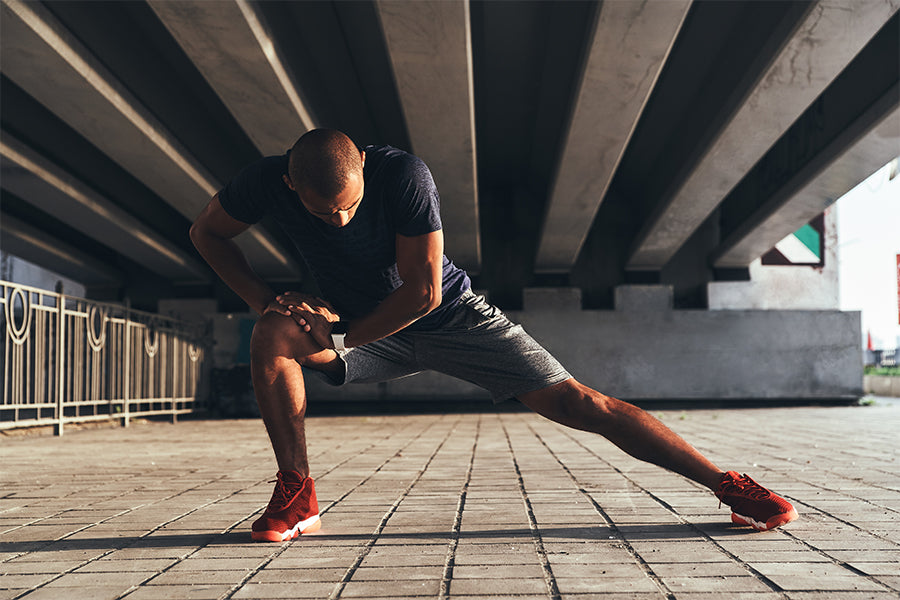Ever felt a nagging pain on the side of your knee while running or a tightness in your hip after a long day at work? You might be surprised that the culprit could be your IT Band. It is like a silent partner in our body, working hard behind the scenes to keep us moving smoothly. But when it's not taken care of, it can certainly make its presence known!
In our everyday hustle and bustle, we often overlook the importance of flexibility and how it impacts our overall health and well-being. And that's where IT band stretches come into play.
This article is your ticket to understanding the magic of these IT band exercises. They're not just exercises; they're your key to unlocking better performance, greater flexibility, and yes, saying goodbye to those annoying aches and pains.
So, let's get started!
What Is Iliotibial Band?
The Iliotibial (IT) band is like a long, stretchy highway that connects your hip to your knee. It's there to help you move and stay balanced, especially when you're doing things like walking, running, or biking. But, just like any other part of your body, it can give you some trouble if it gets too tight or irritated.
This can make you feel uncomfortable, limit how much you can move, and even cause pain. This discomfort often happens because we repeat the same motions over and over, which can make the IT band rub against your thigh bone, causing irritation. It's like a constant tug-of-war between your IT band and your comfort.
The key to winning this battle is understanding how the IT band works and why keeping it flexible is so important for your overall health and performance.
What Is IT Band Syndrome and Its Causes?

IT Band Syndrome is a common issue that can feel like a persistent pain on the outside of your knee, especially when you're moving. This syndrome usually pops up when that IT band gets too tight or inflamed.
Why does this happen?
Well, the main reason is usually overuse. If you're doing the same movements again and again-especially actions that involve bending the knee like running, cycling, or hiking-your IT band can start to feel the strain. It begins to rub against the side of your knee joint, causing irritation and inflammation, hence the pain you feel.
So, while being active is great, it's essential to mix up your routine and give your body the care and rest it needs to prevent issues like IT band syndrome.
What Are the Symptoms of a Tight IT Band?
A tight IT band can make its presence known through various symptoms that can be both uncomfortable and frustrating. If you're experiencing any of these signs, it might indicate that your IT band needs some attention.
Pain or Discomfort on the Outer Side of the Knee
This pain can range from a dull ache to a sharp, stabbing sensation, especially during activities that involve bending or straightening the knee.
Discomfort in the Hip or Thigh Area
You may notice that this pain intensifies when walking downhill, running, or even just going up and down stairs. Also, tightness in the IT band can cause discomfort in the hip or thigh area.
Pulling Sensation on the Outer Side of the Thigh
You might feel a pulling sensation or tightness along the outer side of the thigh, extending from the hip to the knee. This can affect your range of motion and make it challenging to perform activities that require hip and thigh flexibility.
Snapping Sensation in the Knee
Another visible sign of a tight IT band is the knee's popping or snapping sensation. This can occur when the IT band rubs against the bony structures around the knee joint, causing a clicking sound or sensation. This can be alarming and may cause further discomfort and instability.
It's essential to listen to your body and notice these symptoms. Ignoring them or pushing through the pain can lead to further complications and impact your overall mobility and performance. By understanding the signs of a tight IT band, you can proactively address the issue and improve your flexibility and comfort.
Treatment of IT Band Syndrome
If you're dealing with IT band syndrome, there are many ways to tackle it, but what works best might differ for each person. Always talk to your doctor if you're feeling any symptoms to ensure you're getting the right treatment.
Here are some simple things you can do at home to help ease the pain:
Passive Treatment
- Take it easy and stay away from anything that makes it worse.
- Put ice on the sore spot for 20 minutes at a time, a few times each day.
- Over-the-counter meds like ibuprofen or naproxen can help bring down the pain and swelling.
Active Treatment
Regarding a tight IT band, being proactive is key to getting better and gaining more flexibility. This means doing special exercises and techniques designed to help the IT band and the muscles around it relax, stretch, and work properly.
One of the best ways to do this is by doing IT band stretches focusing on the IT band and the muscles it's connected to, like your hip flexors, glutes, and quads.
Foam rolling is another great method for dealing with a tight IT band. You use a foam roller to put pressure on the IT band and roll along it. This helps release tension and smooth out any knots. It also improves blood flow to the area, which aids in recovery and flexibility.
Strength training exercises targeting the hip and thigh muscles are also important. By making these muscles stronger, you give better support to the IT band, which eases the strain on it.
Exercises like squats, lunges, hip thrusts, and lateral leg raises can help strengthen your lower body as a whole, which helps keep your IT band aligned and functioning properly.
Related Article: Six Best Foam Roller Exercises to Relieve Sore Muscles
11 Best Iliotibial Band Stretch
If you are experiencing IT band pain, you'll be desperate for a way to get it out of your system. While you should rest and massage the area to help release the tightness of the muscle, iliotibial band syndrome exercises can do wonders in releasing tension.
We have come up with several different stretching exercises to help relieve your IT band. Here are the 11 best exercises to help you get rid of the debilitating pain:
1. Foam Roller Release
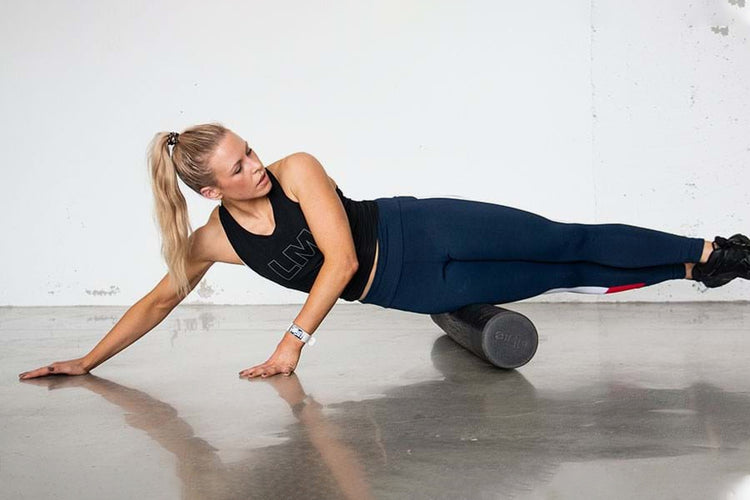
A foam roller is one of the simplest and most effective ways to stretch your IT band. Simply place the roller on the ground and lie on your side with the affected leg on top of the roller.
How to Do It:
- Slowly roll back and forth from your hip to your knee, applying as much pressure as you can tolerate.
- Stop if you feel any knee pain.
- Do 2-3 sets of 10-15 repetitions on each side.
2. Quadriceps Stretch
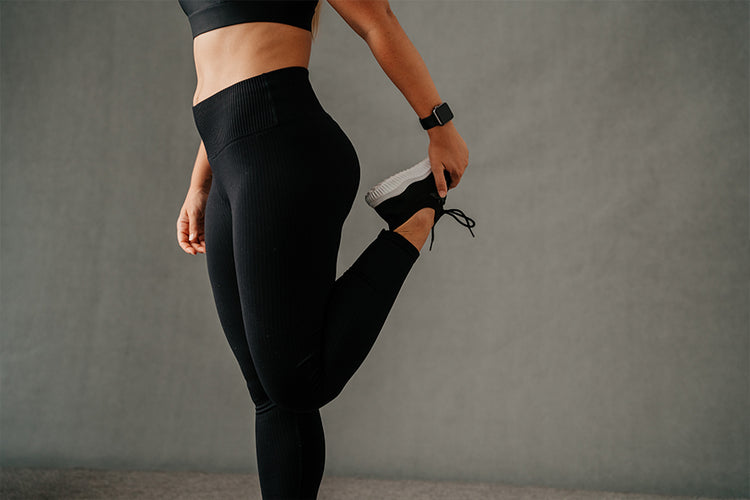
Tight quadriceps can lead to a tight IT band because they are closely connected. If you stretch your quads, you help them loosen up, translating into a flexible IT band.
How to Do It:
- Stand tall with your feet hip-width apart and place your right hand on a wall or chair for support.
- Bend your left knee and grab your ankle with your left hand.
- Gently pull your heel toward your buttock, feeling a stretch in the front of your thigh.
- Hold for 30 seconds and repeat on the other side.
3. Hamstring Stretch
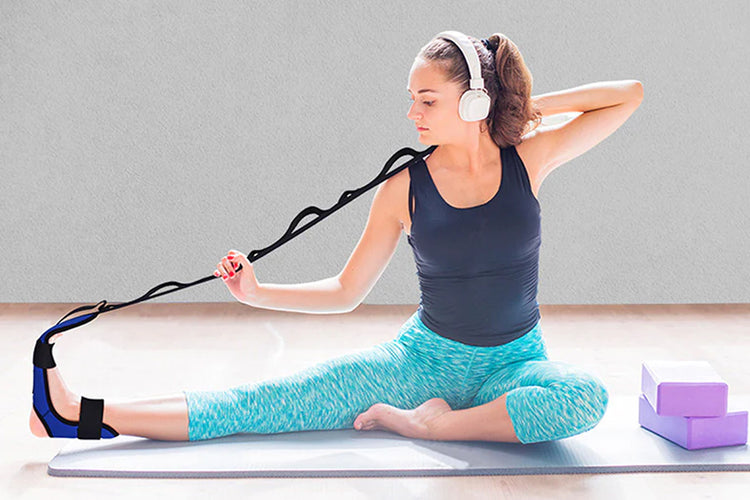
Like quadriceps, tight hamstrings can also have a role to play in IT band syndrome.
A foot and leg stretcher can significantly aid hamstring stretches by providing a deep and effective stretch. It helps strengthen the ankles, hamstrings, and calves while improving the range of motion and flexibility.
DMoose Foot & Leg Stretcher is highly recommended for gymnastics and other activities. Its convenient design and comfortable material allow easy and gentle stretching, making it suitable for athletes, dancers, yoga enthusiasts, and anyone looking to enhance their flexibility and overall foot health.
How to Do It:
- Sit on the ground with your legs straight in front of you.
- Bend forward at your hips, keeping your back straight, and reach for your toes.
- If you can't reach them, loop a towel around your feet and gently pull until you feel a stretch in the back of your thighs.
- Hold the stretch for 30 seconds and repeat on the other side.
4. Gluteal Stretch
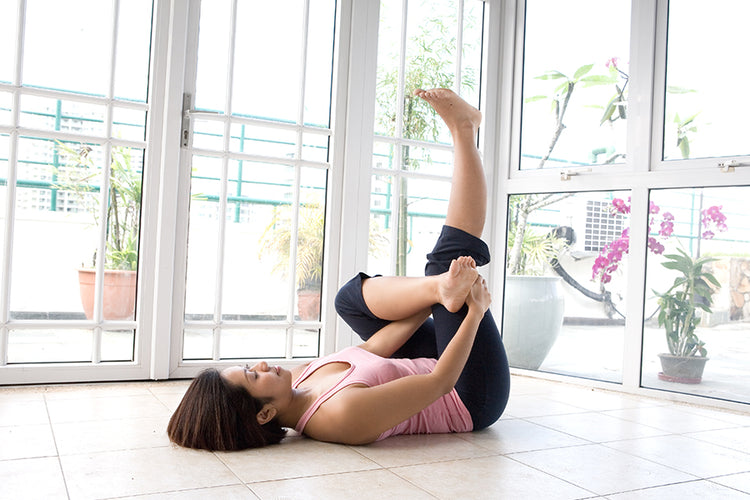
The glutes or hip muscles attach to the IT band, so keeping them strong yet flexible is essential. Since the IT band is attached to all the muscles in your hips, legs, and thighs, you must engage your lower body or leg muscles to release this nagging pain.
How to Do It:
- Lie on your back with your knees bent and feet flat on the ground.
- Place a rolled-up towel or a foam roller under your right knee and grab your right foot with your right hand.
- Pull your heel toward your buttock until you feel a stretch in your hip muscles.
- Hold for 30 seconds and repeat on the other side.
5. Piriformis Stretch

The glutes or hip muscles attach to the IT band, so keeping them strong yet flexible is essential. Since the IT band is attached to all the muscles in your hips, legs, and thighs, you must engage your lower body or leg muscles to release this nagging pain.
How to Do It:
- Lie on your back with your knees bent and feet flat on the ground.
- Place a rolled-up towel under your right knee and grab your right ankle with your right hand.
- Gently pull your heel toward your buttocks.
- You should keep going until you feel a stretch in your piriformis muscle.
- Hold for 30 seconds and repeat on the other side. with your knees bent and feet flat on the ground.
- Place a rolled-up towel or a foam roller under your right knee and grab your right foot with your right hand.
- Pull your heel toward your buttock until you feel a stretch in your hip muscles.
- Hold for 30 seconds and repeat on the other side.
6. Hip Abduction With Resistance Band
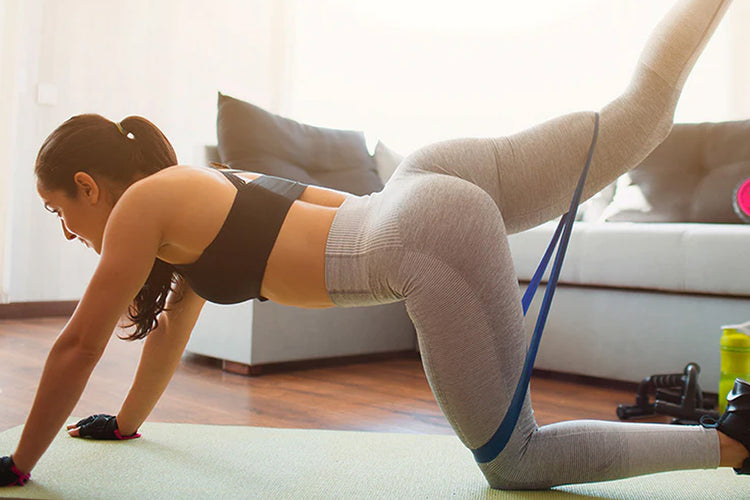
This is a great exercise to strengthen the muscles that attach to the IT band, helping to prevent pain and injury. You can use the DMoose Resistance Band to perform this exercise. Designed specifically for targeting and strengthening your hip muscles, this versatile band provides optimal resistance and support.
How to Do It:
- Place a resistance band around your ankles and stand with your feet hip-width apart.
- Keeping your knees slightly bent, raise your left leg to the side, away from your body.
- Slowly return to the starting position and repeat 10-15 times.
- Repeat on the right leg.
Related Article: Build Muscles the Easy Way With Resistance Bands
7. Clam Exercise

Clam is perfect for engaging your glutes and strengthening the hip muscles. It activates your IT band to engage your glutes and helps relieve the ITB pain.
Take your clam exercises to the next level with the dynamic and versatile DMoose Hip Circle Band. It targets your gluteus medius and enhances hip strength. With its unique design and varying resistance levels, the loop band challenges your muscles, helping you sculpt and tone your hips and glutes effectively.
How to Do It:
- Lie on your right side with your knees bent and feet together.
- Place a resistance band around your ankles and slowly lift your left knee, keeping your feet together.
- Return to the starting position and repeat 10-15 times on each side.
8. Side-Lying Leg Lift
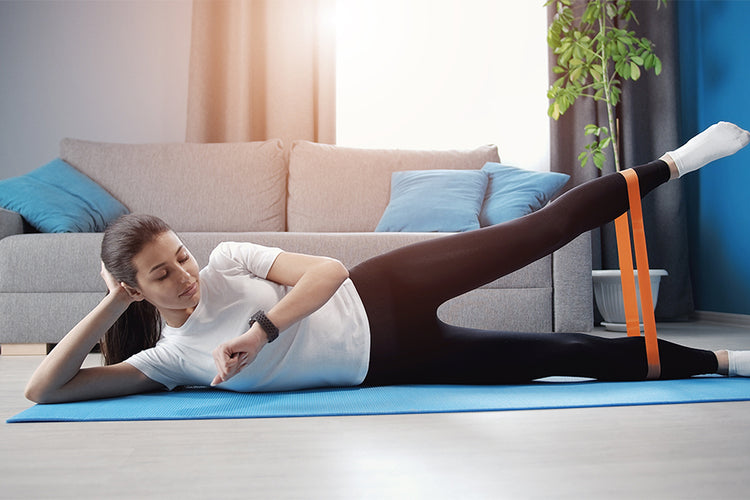
Side-lying leg lifts strengthen your legs overall and help relieve tension in all the muscles connected to the IT band. When the attached muscles are flexible and soft, IT band pain and swelling will be relieved automatically.
How to Do It:
- Lie on your right side with your legs straight and your left hand resting on your right hip.
- Slowly lift your left leg as high as possible, then lower it back to the starting position.
- Repeat 10-15 times on each side.
9. Seated Leg Extension
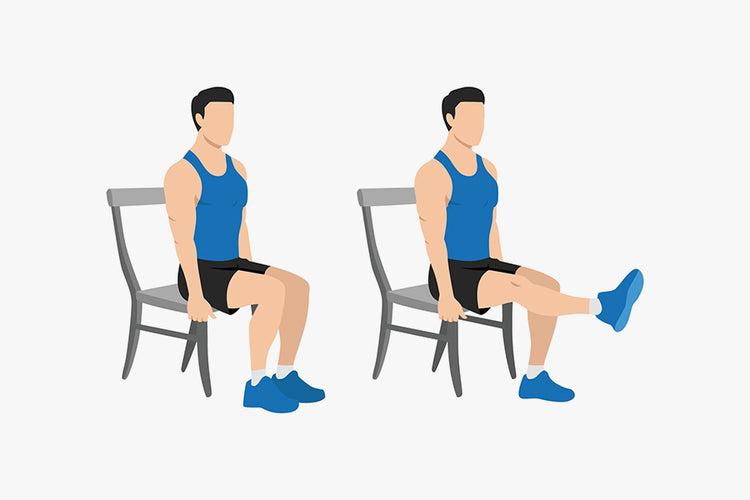
The seated leg extension is one of the favorites among IT band stretches for seniors. It helps relieve tension in the IT band that causes excessive friction and pain. Seated leg extension works for the elderly as well, who can do it without risking a fall.
How to Do It:
- Sit in a chair with your back straight and feet flat on the ground.
- Place a resistance band around your ankles and slowly extend your left leg out in front of you, keeping your knee straight.
- You'll feel a stretch in your thighs.
- Return to the starting position and repeat 10-15 times on each side.
10. Straight Leg Raise
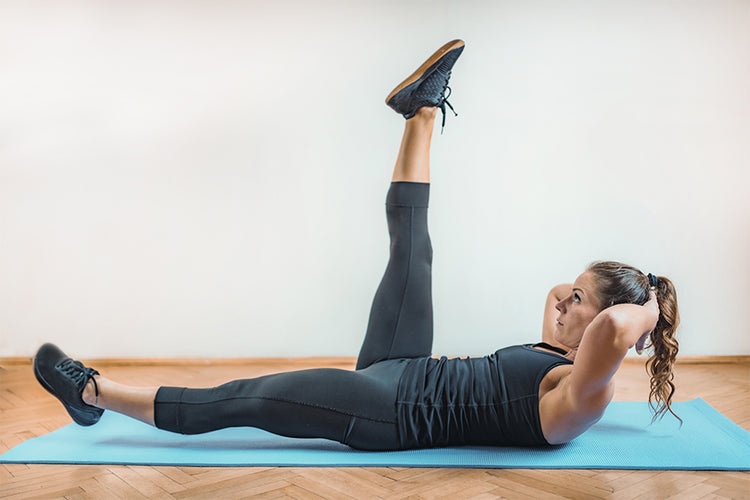
Straight leg raise is another excellent stretching exercise for treating IT band syndrome. These stretching exercises are home remedies; however, if they do not relieve pain, you must see a physical therapist to help you activate the IT band effectively.
How to Do It:
- Lie on your back with your legs straight and feet flat on the ground.
- Place a resistance band around your ankles and slowly raise your left leg up, keeping your knee straight.
- The right leg must stay straight and on the ground.
- It's important to feel a stretch while performing these stretches.
- Return to the starting position and repeat 10-15 times on each side.
11. Crossed Leg Forward Tilt

Tilting down with your legs crossed leads to a healthy stretch in the leg muscle, which is great for your ITB pain. It nudges the IT band ever so slightly, helping to relieve the tension that causes the infamous hip and knee pain.
How to Do It:
- Start in a standing position with your feet close together.
- Next, cross your right leg over your left leg, setting your right foot down to the outside of your left foot.
- Reach down to your left foot while breathing deeply.
- Hold the stretch for 30 seconds as the muscle releases.
- Do the same with the opposite foot.
Conclusion
The IT band, or iliotibial band, is a thick piece of tissue that runs from your hip down to the outer part of your knee. This band can sometimes get tight and cause pain, especially if you're active. However, you can do IT stretches to help improve flexibility in this area. Doing these exercises regularly can help keep your IT band flexible and pain-free.
 Skip to content
Skip to content









